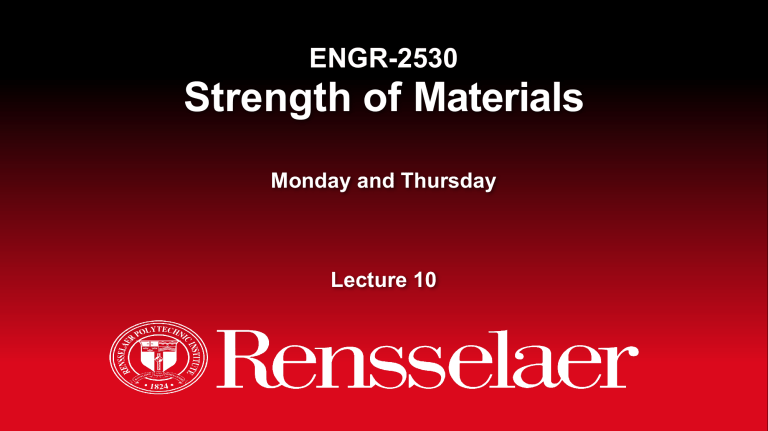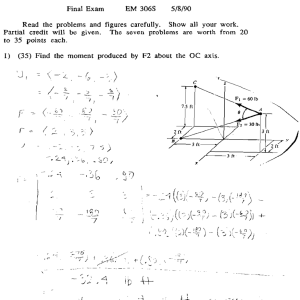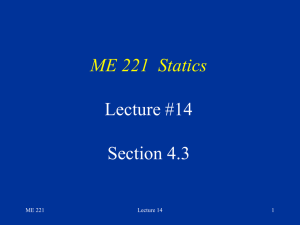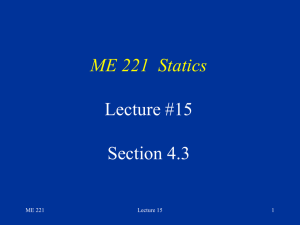Strength of Materials Lecture: Centroid, Inertia, Bending
advertisement

ENGR-2530 Strength of Materials Monday and Thursday Lecture 10 Lecture Outline • • • • • Centroid. Moments of Inertia. Pure Bending. Bending Deformations. Bending Stress 2 CONCEPT OF CENTROID The centroid, C, is a point defining the geometric center of an object. The centroid coincides with the center of mass or the center of gravity only if the material of the body is homogenous (density or specific weight is constant throughout the body). If an object has an axis of symmetry, then the centroid of object lies on that axis. In some cases, the centroid may not be located on the object. First Moment of an Area First moments of the area A with respect to x and y axes: Centroid The centroid of the area A is defined as the point C of coordinates and which satisfy: Centroids of common shapes Determination of Centroid of a Composite Area Example Determine the location of centroid: Second Moment or Moment of Inertia Moments of Inertia of the area A with respect to x and y axes: Moments of Inertia of Common Shapes Moment of Inertia of a Composite Area Parallel Axis Theorem: Distance from x to x’ Example Determine the moment of inertia Ix with respect to the centroid x (horizontal) axis that passes through centroid: Moment of Inertia For area 1 with respect to its centroid axis (x’): For area 1 with respect to general centroid axis (x): Similarly for area 2: Moment of Inertia Example Calculate Moment of Inertia : Vertical and Horizontal Directions with respect to centroid In-Class Assignment Locate the centroid and Calculate the moment of inertia around the horizontal (x) Axis Summary For Centroids: For Moments of Inertia: Polar Moment of Inertia y x J = 12 π r 4 Pure Bending Pure Bending: Prismatic members subjected to equal and opposite couples acting in the same longitudinal plane Symmetric Member in Pure Bending Equilibrium Internal forces in any cross section are equivalent to a couple. Bending moment = Moment of couple Symmetric Member in Pure Bending Fx = ∫σ x dA = 0 M y = ∫ zσ x dA = 0 M z = ∫ − yσ x dA = M The only nonzero stress component is σx Bending Deformations Beam with plane of symmetry in pure bending: member remains symmetric bends uniformly to form a circular arc cross-sectional plane passes through arc center and remains planar length of top decreases and length of bottom increases a neutral surface (length does not change) must exist: parallel to upper and lower surfaces stresses and strains: - negative (compressive) above neutral plane - positive (tension) below it 34





